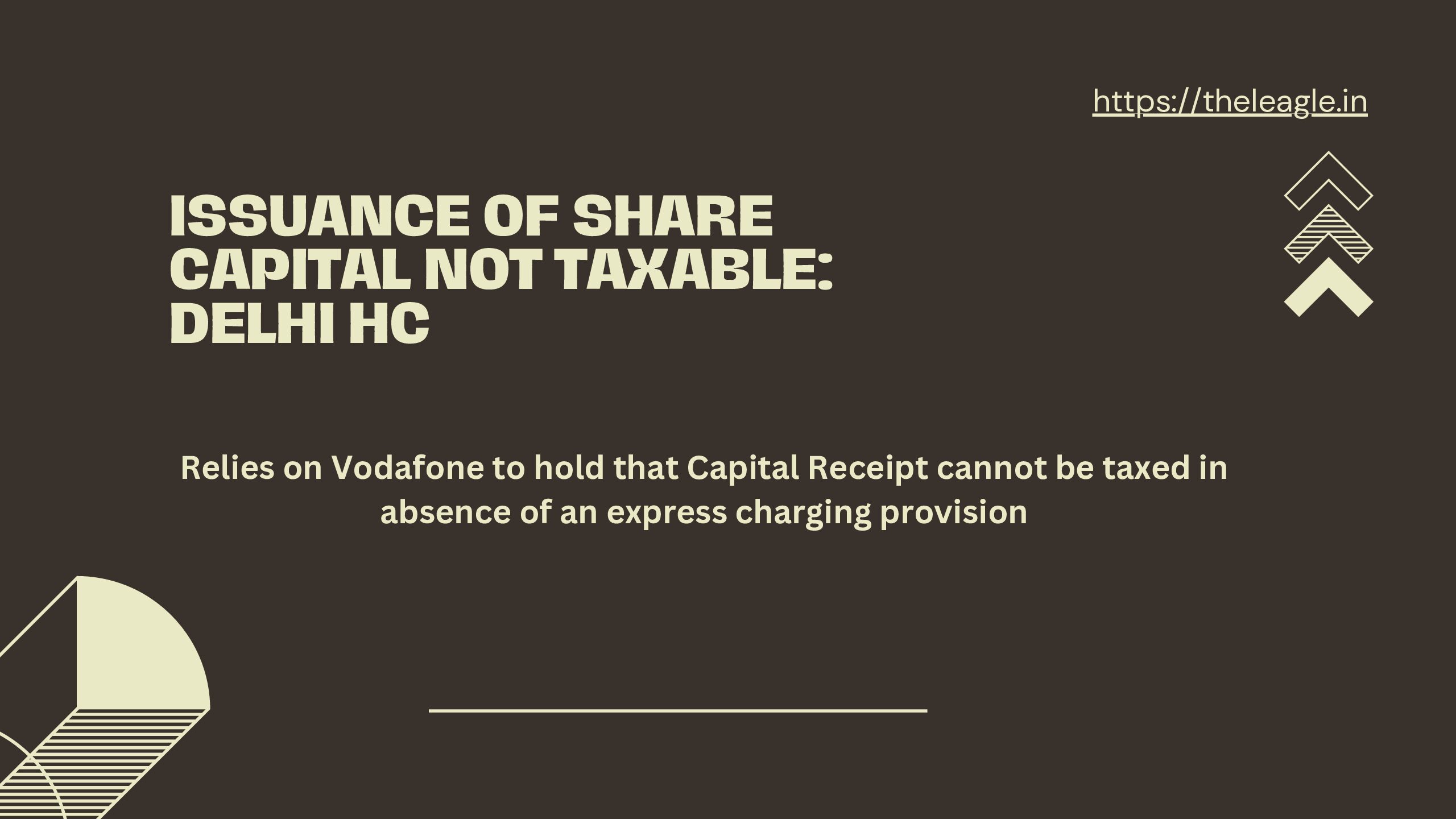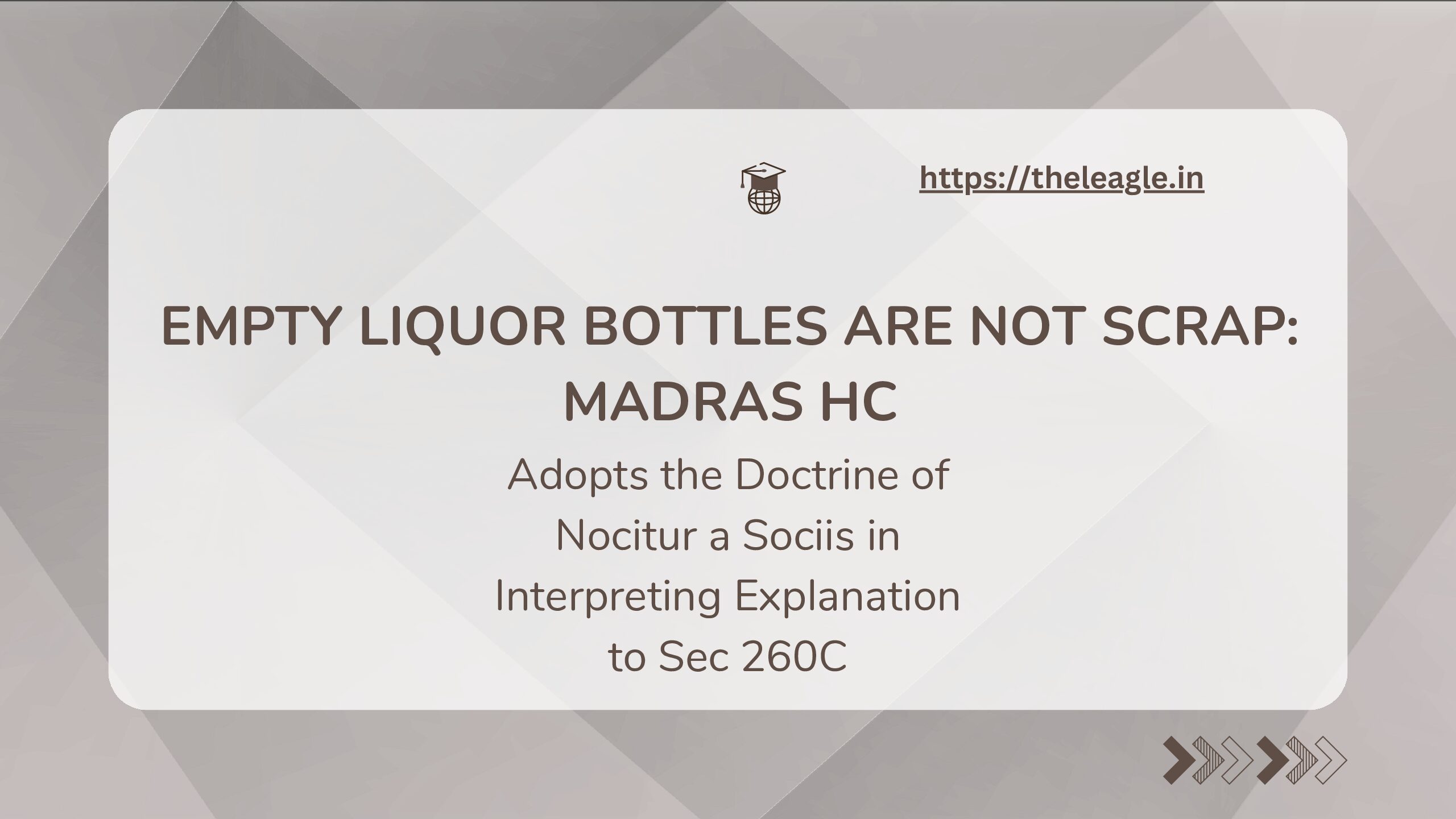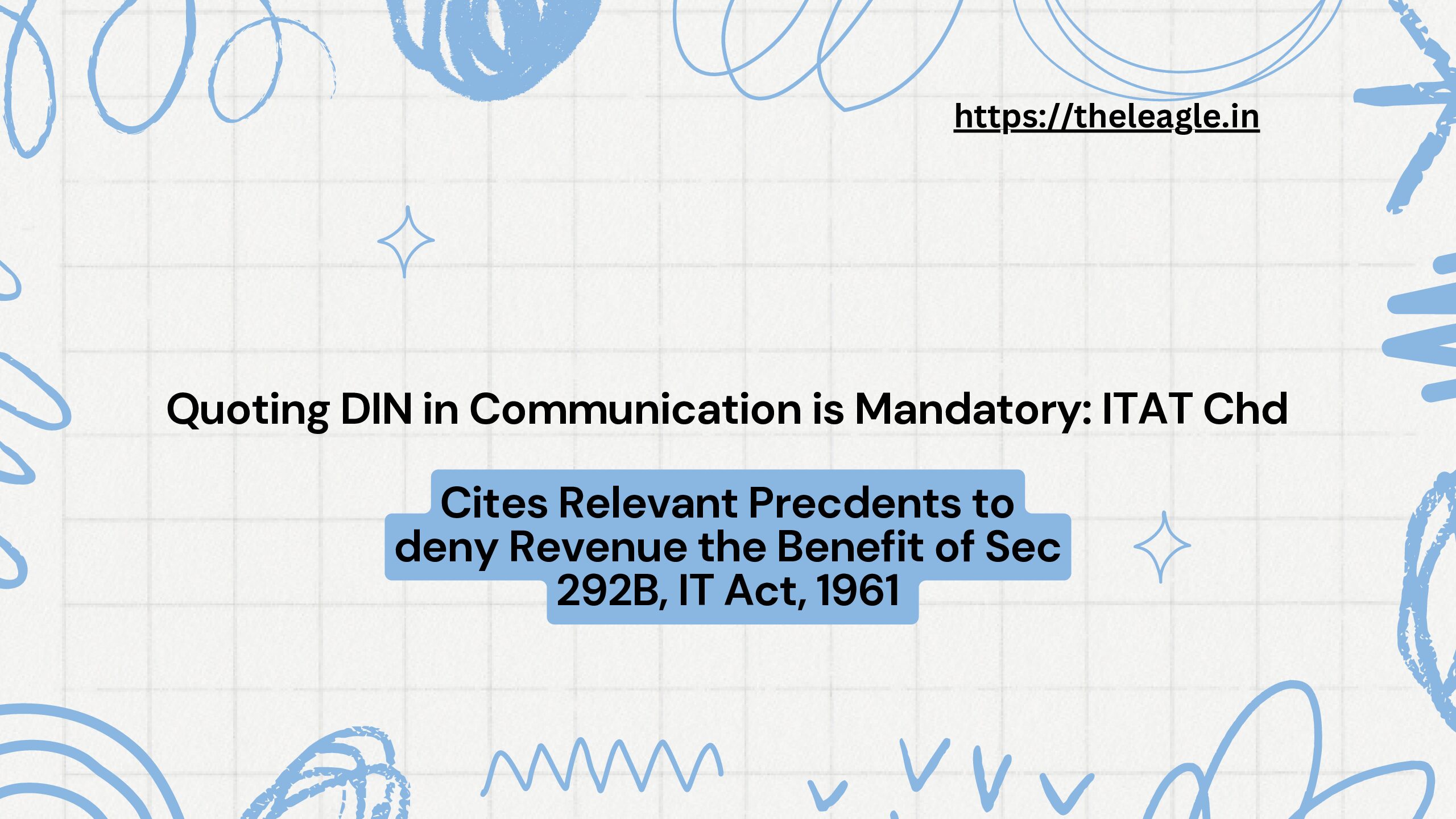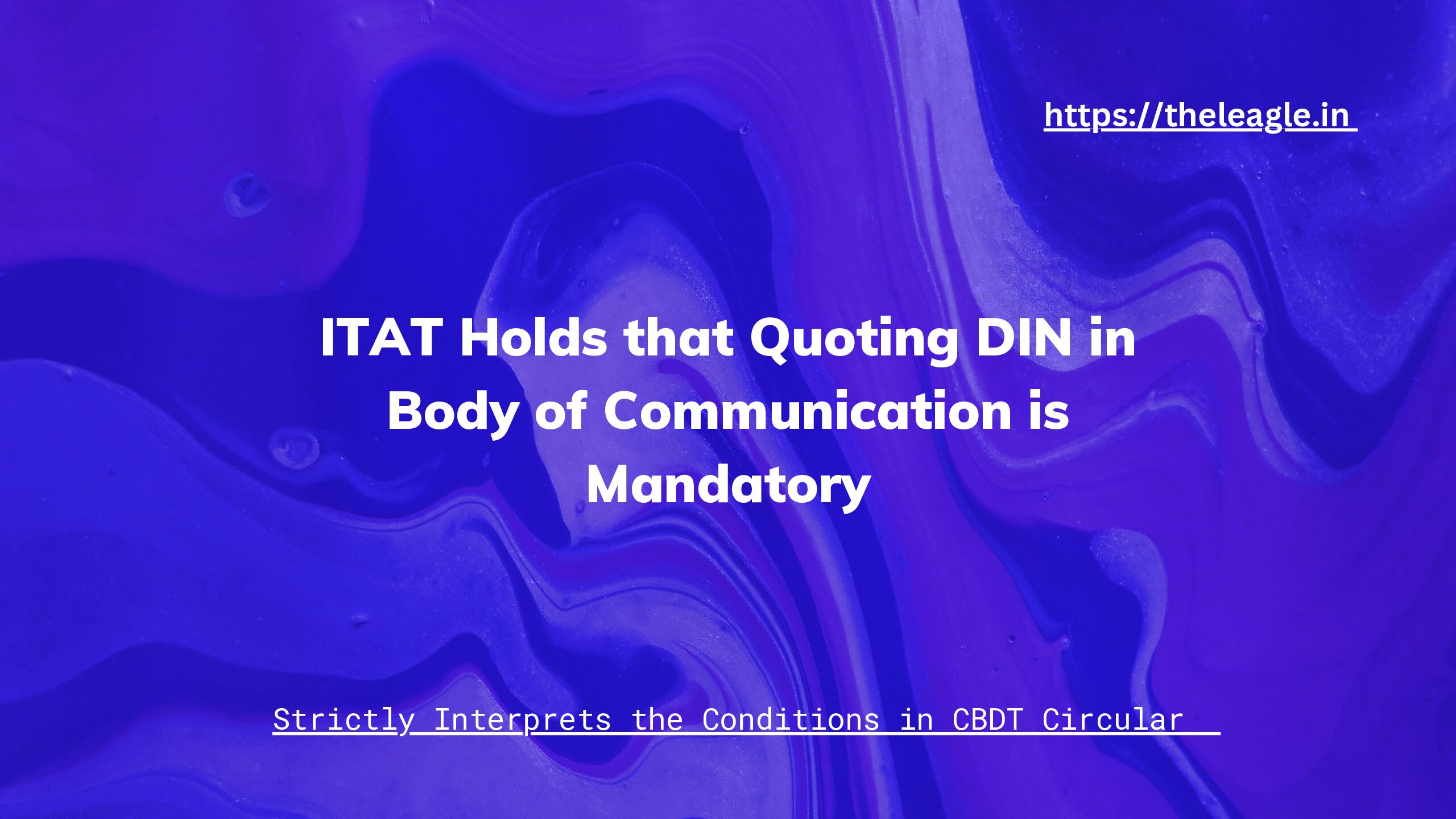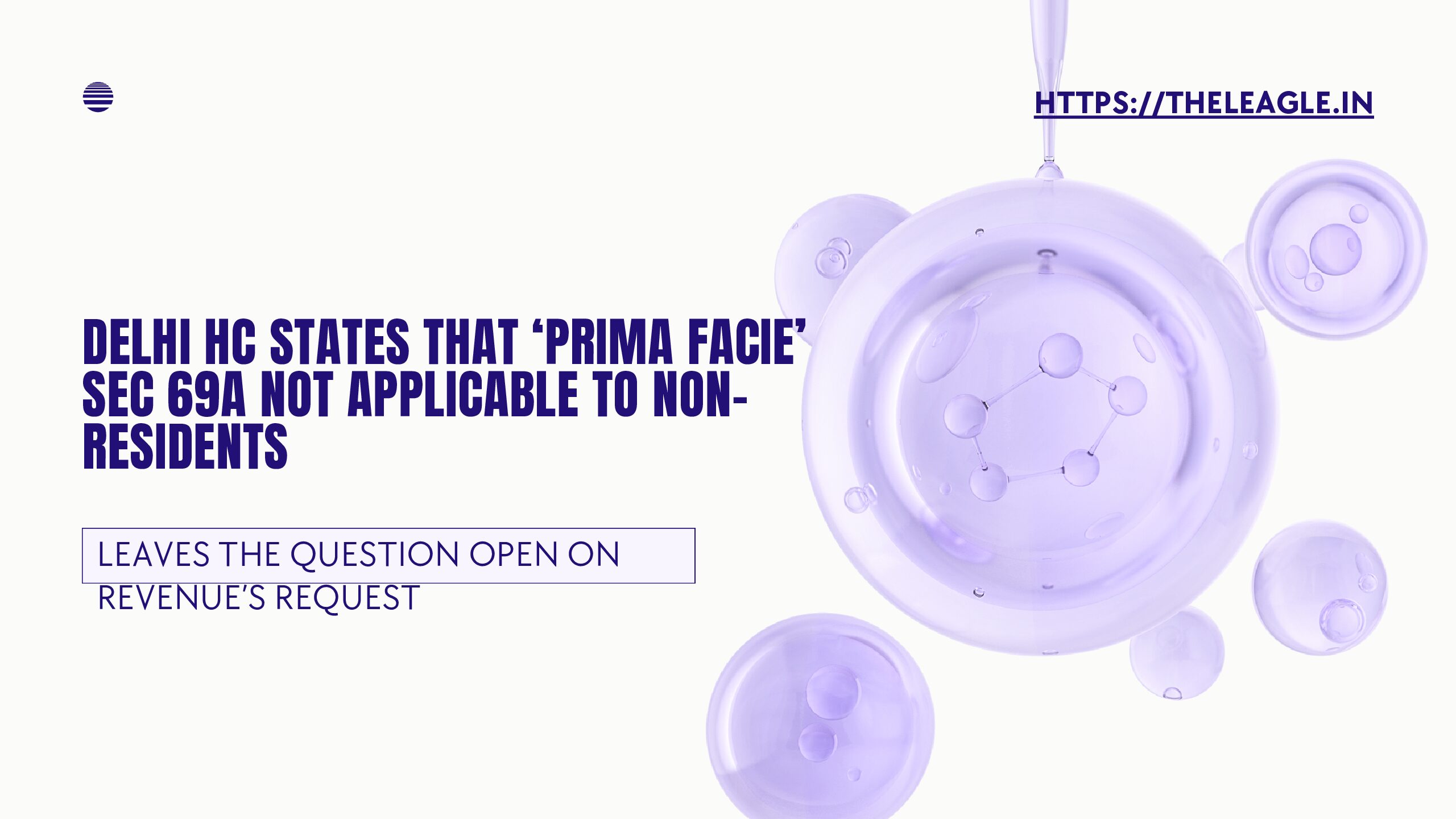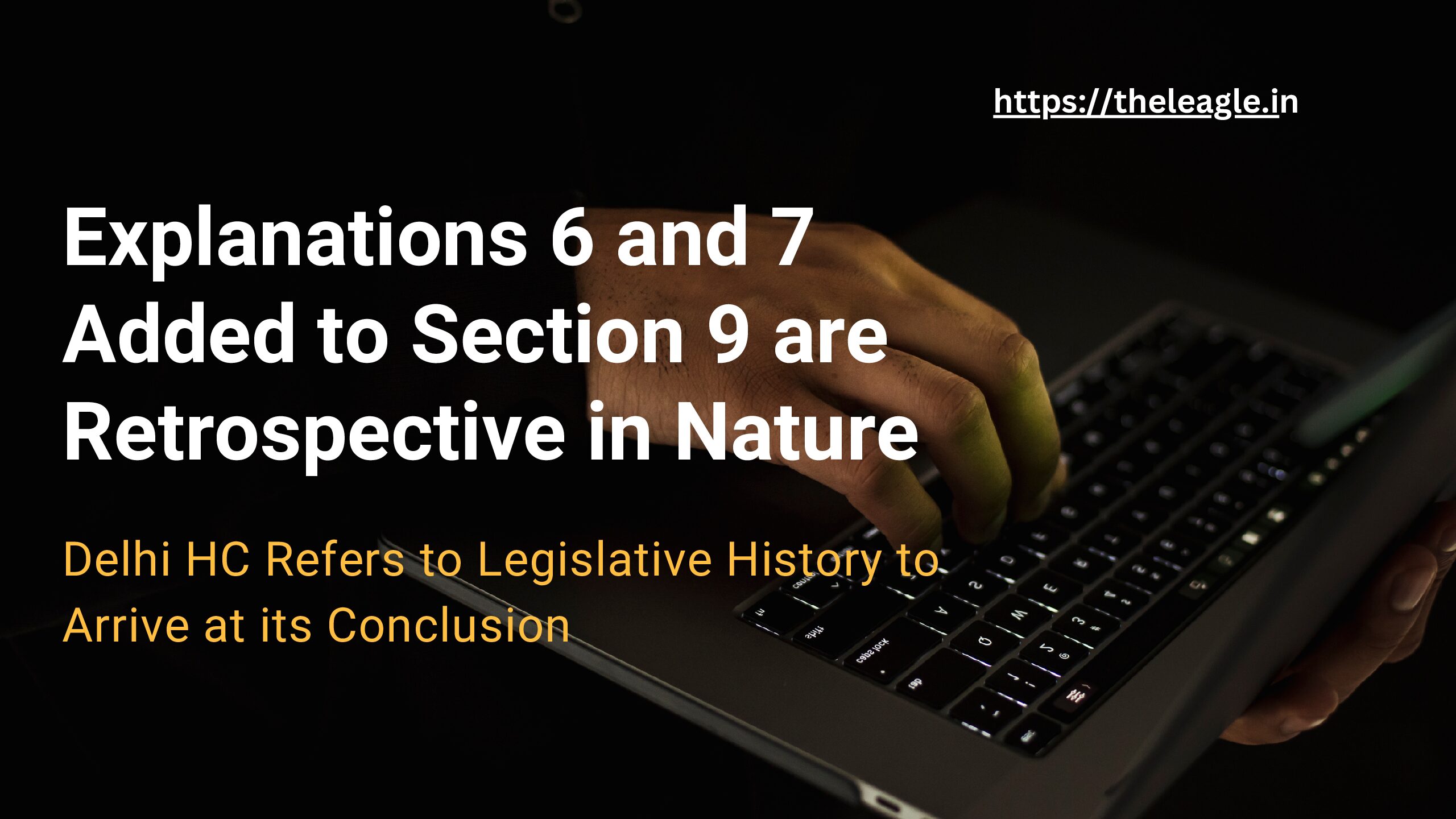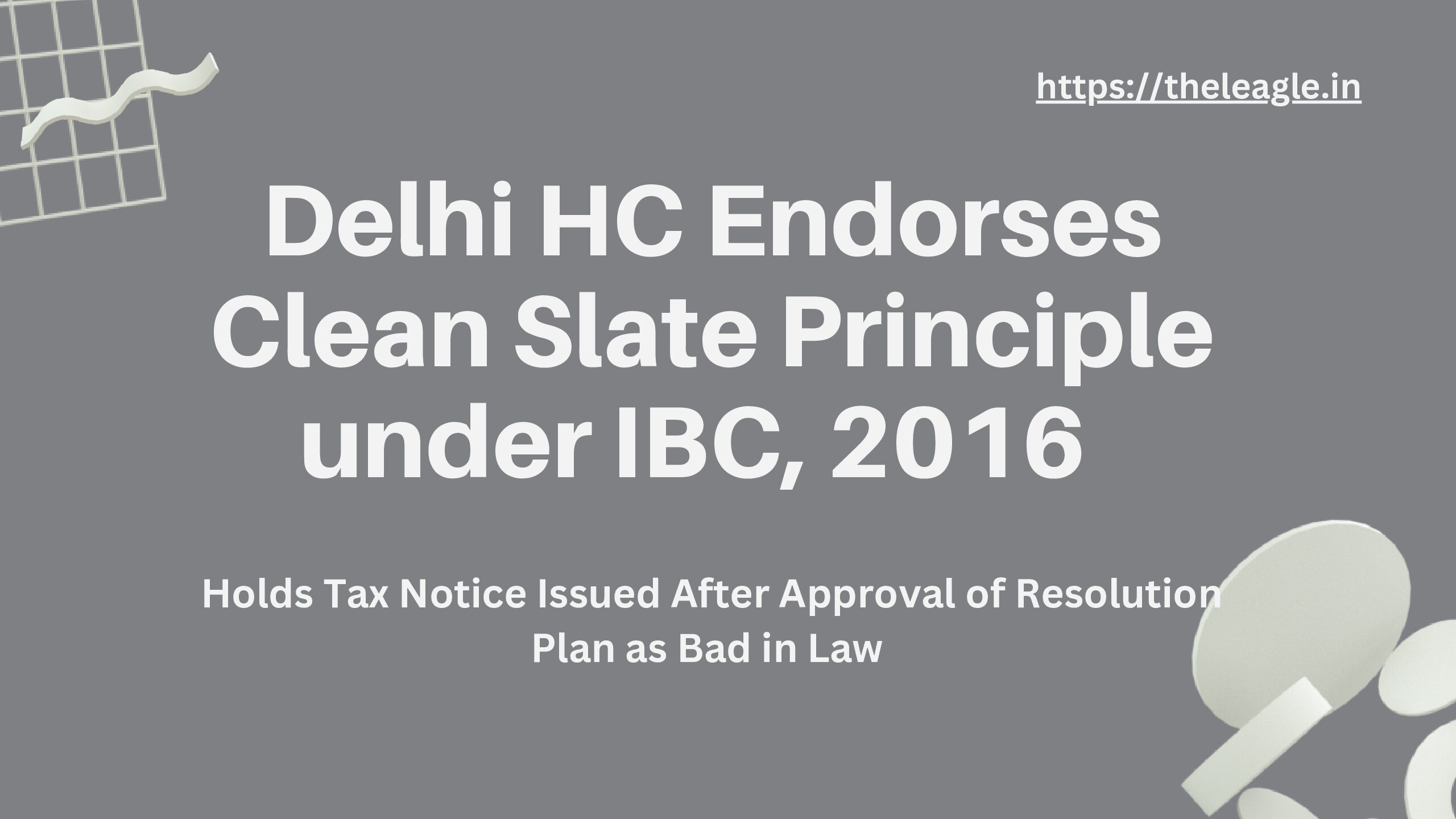The Supreme Court recently granted an interim stay on the Delhi High Court’s judgment wherein it was held that a communication issued by an income tax authority without citing the computer-generated Document Identification Number (‘DIN’) does not have any standing in law. While the one line stay order of the Supreme Court does not mention the reasons, it is worth examining how the Income Tax Department is trying to circumvent the mandate of a Circular issued by its own apex administrative body, i.e., the Central Board of Direct Taxes.
Contents of the CBDT Circular
Before I elaborate the legal issue involved, it is apposite to summarise the CBDT’s Circular, its aim and content. The CBDT issued a Circular on 14.08.2019 stating that as part of the broader e-governance initiatives as well as Income Tax Department’s move towards computerisation of work, almost all notices and orders are being generated on the Income Tax Business Application Platform (ITBA). However, the Circular noted that some notices were being issued manually without providing an audit trail of communication. To prevent manual communication, the CBDT in exercise of its powers under Section 119, IT Act, 1961 issued the impugned Circular. Paragraph 2 of the Circular mandated that no communication by any income tax authority relating to assessment, appeals, order, exemptions, investigation, etc. shall be issued unless a computer-generated DIN has been allotted and is duly quoted in the body of such communication.
Paragraph 3 of the Circular enlisted limited exceptions when a manual communication can be issued by an income tax authority. Paragraph 3 envisaged 5 situations:
- When there are technical difficulties in generating/allotting/quoting the DIN
- When communication is required to be issued by an income tax authority who is outside the office
- When due to delay in PAN migration, PAN is with non-jurisdictional Assessing Officer
- When PAN of assessee is not available and proceeding under the IT Act, 1961 is sought to be initiated
- When functionality to issue communication is not available in the system
However, to issue the manual communication in any of the above 5 situations, reasons need to be recorded in writing and prior written permission of Chief Commissioner/Director General of Income Tax is required. Further, the manual communication needs to state the fact that communication is being issued manually without generating a DIN and the date of written approval. For manual communication in situations (i), (ii), and (iii), Paragraph 5 of the Circular states that the communication needs to be ‘regularised’ by uploading it on the System, generating a DIN and communicating the DIN to the assessee. Presumably, the generation of DIN and its communication to assessee would happen on an ex-post basis, but the requirement of generating the DIN needs to be fulfilled nonetheless in these situations.
Paragraph 4, crucially, and in unambiguous terms states the consequence for not adhering to the mandate of the Circular: any ‘communication which is not in conformity with Para-2 and Para-3 above, shall be treated as invalid and shall be deemed to have never been issued.’
The above summary of the Circular leaves no doubt that the intent of CBDT is to make manual communication by income tax authorities an exception and electronic communication containing DIN a norm. This is evident in the fact that even when manual communication is allowed under certain exigencies, it needs to be regularised on ITBA to ensure an audit trail. And the seriousness of the intent is reflected in Paragraph 4 which states that a ‘DIN-less’ communication is non-existent in law.
The above Circular was to have effect from 01.10.2019.
Legal Issues
Since the issuance of the Circular, Income Tax Appellate Tribunals and High Courts have, on various instances, opined on the effect of the Circular. The general fact pattern has been that an income tax authority issued a communication after 01.10.2019 without generating the DIN, or without mentioning it in the body of the communication or communicating with the assessee manually without the Income Tax Department being able to justify that any of the 5 exceptional situations existed. The assessees have challenged the ‘DIN-less’ communications as invalid and judicial authorities have pre-dominantly favored the assessee. The three legal prongs on which the decisions stand are:
First, Circulars issued by CBDT under Section 119 of IT Act, 1961 are binding on the Revenue, i.e., all officers and persons employed in execution of the IT Act, 1961 need to compulsorily adhere to CBDT’s Circular.
Second, strict interpretation of Paragraphs 2 and 4 of the CBDT Circular. Former requires generation of DIN and quoting it in the body of communication. Accordingly, ex post generation of DIN and communicating it to the assessee or not mentioning the DIN in the body of communication has been held to be non-compliance of the Circular’s mandate.
Third, the Income Tax Department cannot take recourse to Section 292B of IT Act, 1961. Section 292B, IT Act, 1961 states that any return of income, assessment, notice, etc. shall not be deemed to be invalid merely by reason of any mistake, defect or omission if the communication or proceeding are in substance and effect in conformity with the intent and purpose of IT Act, 1961. Delhi High Court observed that the defence of Section 292B is not available to the Income Tax Department since the ‘phraseology’ used in Paragraph 4 of the Circular is clear: a communication not issued in accordance with the conditions prescribed in Paragraphs 2 and 3 shall have no standing in law. The Delhi High Court’s judgment has now been stayed by the Supreme Court.
The Income Tax Department in filing a Special Leave Petition before the Supreme Court challenging the Delhi High Court’s decision is signaling that it is not bound by CBDT’s Circular or that it would only adhere to the Circular if it is aligned with the Department’s interpretation, i.e., generating DIN and quoting it in the body of the communication is only a procedural formality and not following the said procedure should not affect the validity of the communication. The Income Department’s interpretation though is not on sound legal footing as the Circular is clear that not following the prescribed procedure would render the communication non-existent in the eyes of law. What is the middle path that the Supreme Court can invent? Even if the Supreme Court states that the Income Tax Department can claim the defence of Section 292B, it would be akin to reading down Paragraph 4 of the Circular. Perhaps the Income Tax Department can press upon the Supreme Court that if ‘DIN-less’ communications are held to be invalid, it would result in a vacuum in certain assessment proceedings, risk loss of revenue, and create legal uncertainty. This consequential approach has succeeded before Courts in various instances and can possibly have traction in the impugned case as well. But, to my mind, it will not be prudent and would directly contradict CBDT’s stance.

